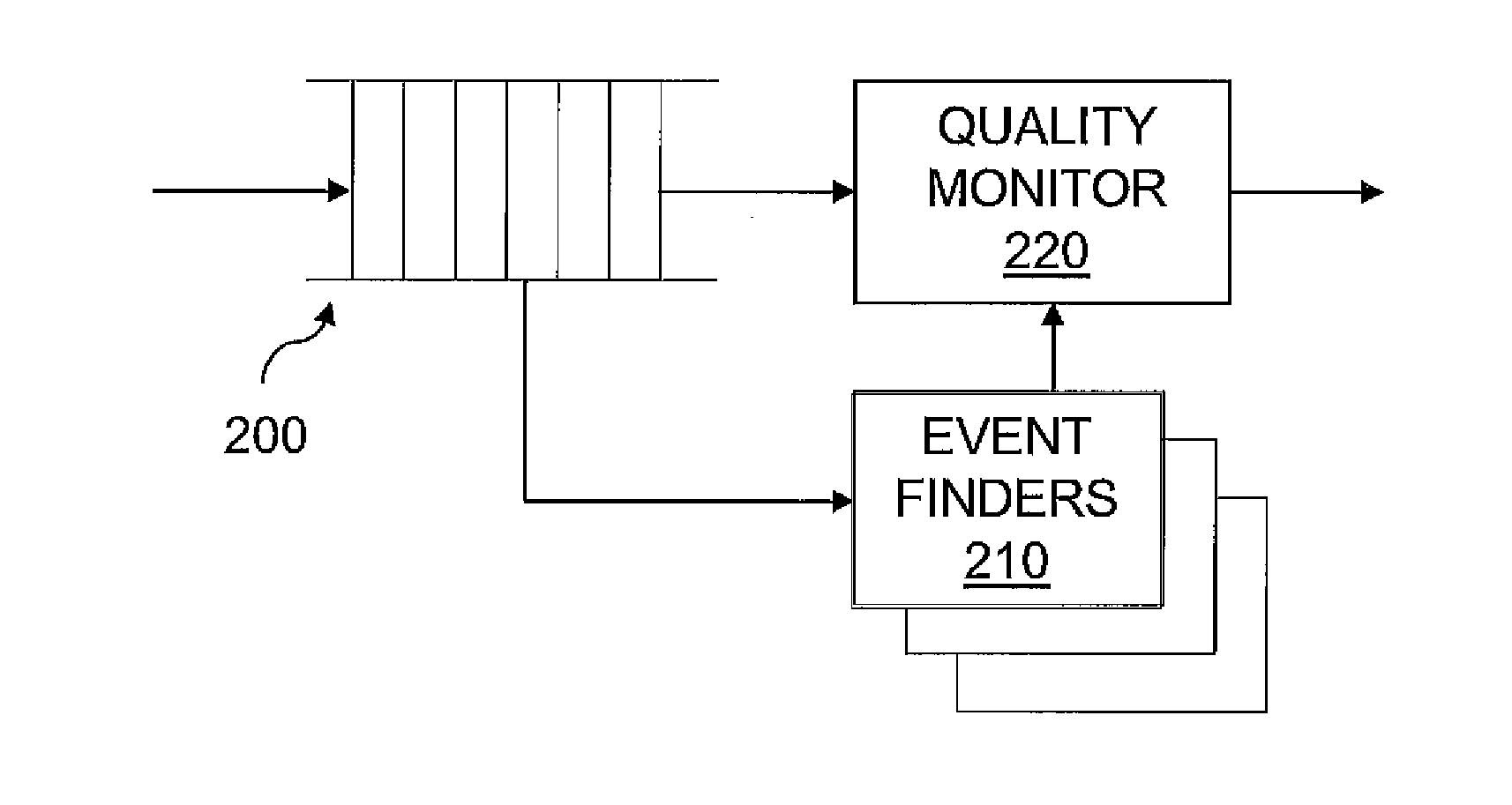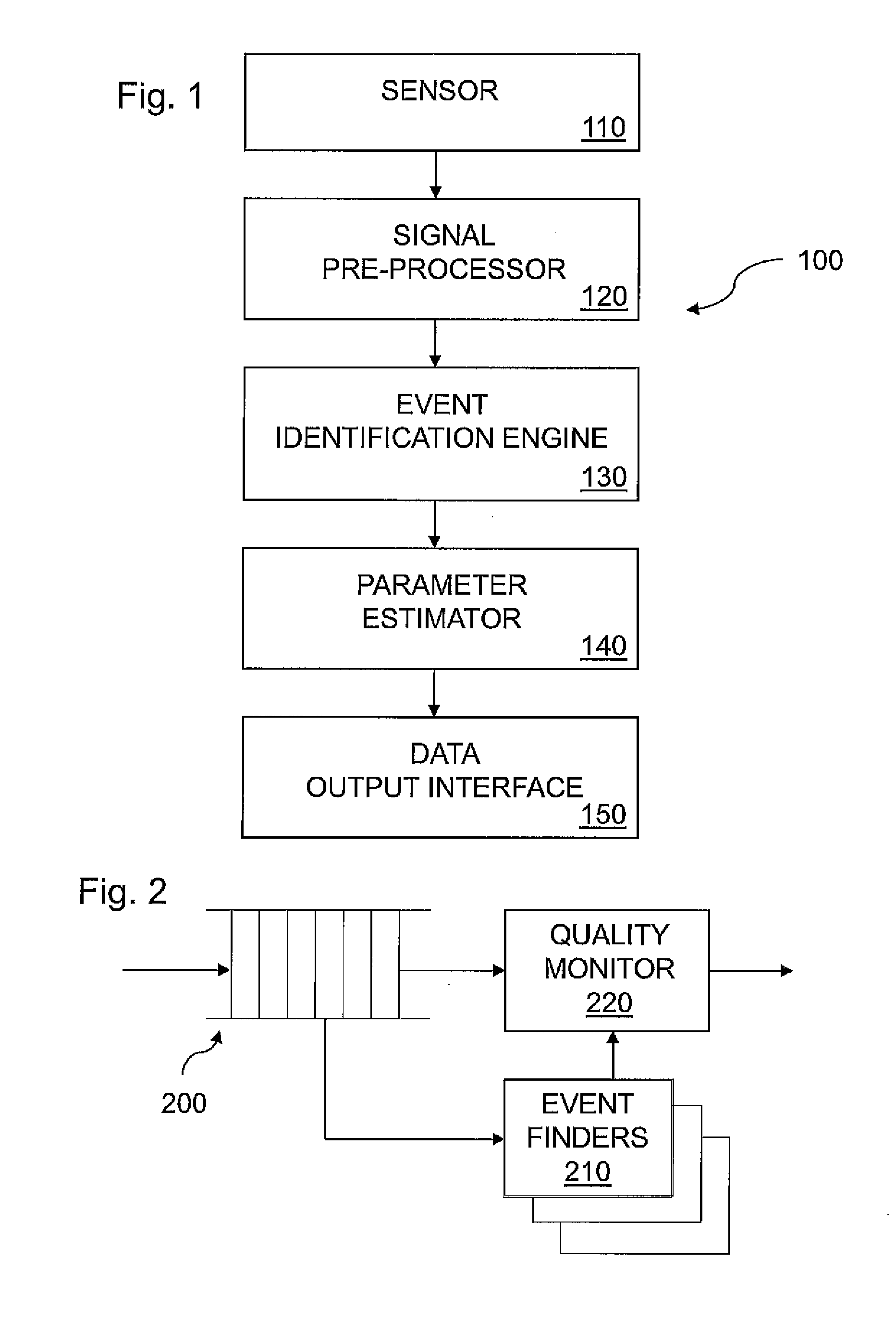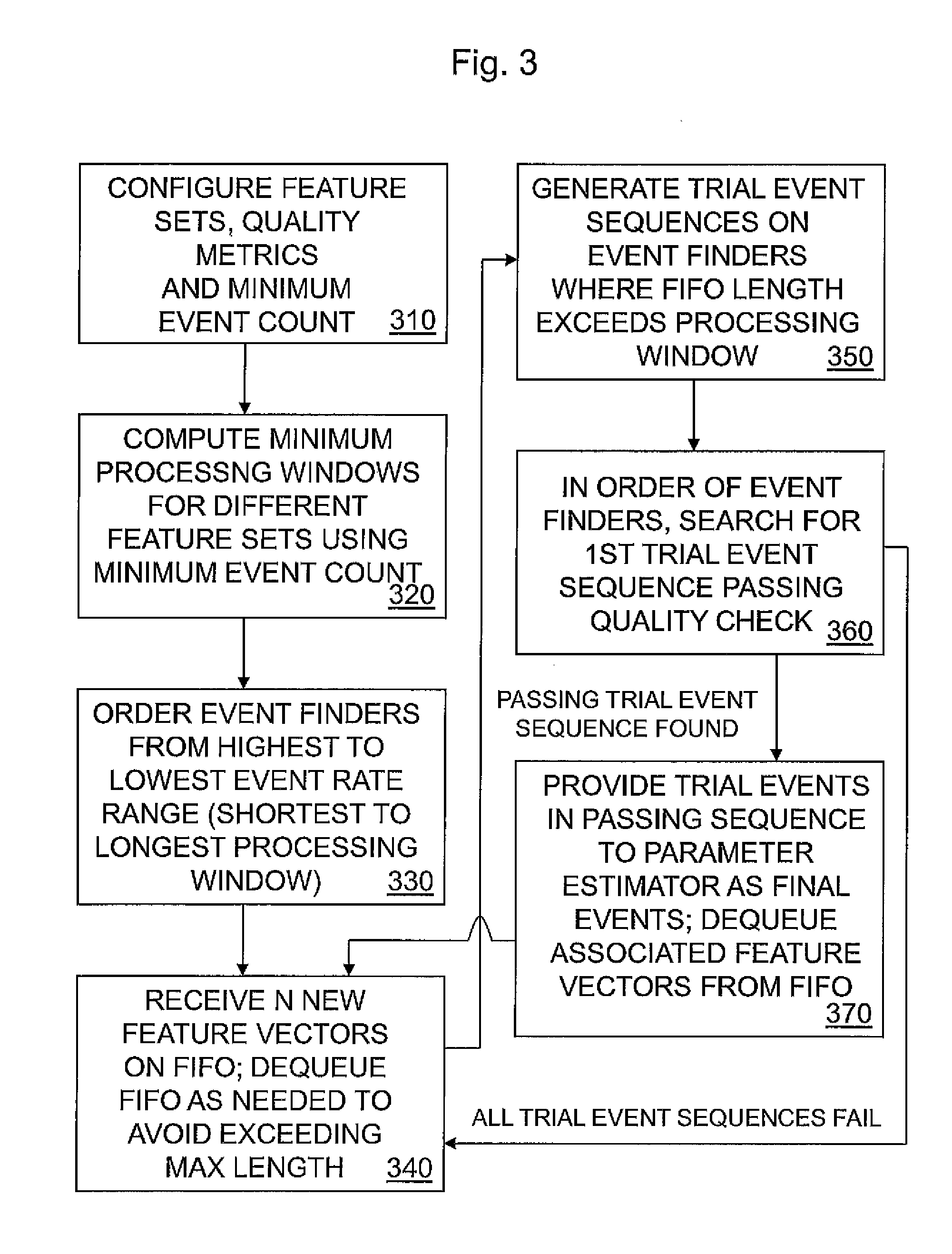Method and Engine for Identifying Events in a Sensor Signal Using Rate-Dependent Feature Sets
a technology of event attributes and feature sets, applied in the field of event attributes identifying in sensor signals, can solve the problems of degrading the performance of event attributes, unable algorithms executed by electronic monitoring devices routinely fail to account for the rate dependence of event attributes, so as to improve the identification of respiration segments and improve the effect of event identification
- Summary
- Abstract
- Description
- Claims
- Application Information
AI Technical Summary
Benefits of technology
Problems solved by technology
Method used
Image
Examples
Embodiment Construction
[0025]FIG. 1 shows an electronic monitoring device 100 in some embodiments of the invention. Device 100 has a sensor 110 that generates a sensor signal having samples that record events being monitored. Sensor 110 may take various forms. For example, sensor 110 may be an acoustic sensor having a microphone capturing sounds associated with events. Alternatively, sensor 110 may detect changes in condition, such as changes in position (movement), air pressure or density, associated with events. Sensor 110 continually transmits a sensor signal waveform to signal preprocessor 120.
[0026]Signal preprocessor 120 preprocesses the sensor signal waveform received from sensor 110 to prepare the signal for processing by event identification engine 130. Preprocessor 120 extracts signal attributes from the sensor signal waveform to yield feature vectors. Each feature vector characterizes a segment of the signal over a predetermined time interval in terms of attributes useful for event identificati...
PUM
 Login to View More
Login to View More Abstract
Description
Claims
Application Information
 Login to View More
Login to View More - R&D
- Intellectual Property
- Life Sciences
- Materials
- Tech Scout
- Unparalleled Data Quality
- Higher Quality Content
- 60% Fewer Hallucinations
Browse by: Latest US Patents, China's latest patents, Technical Efficacy Thesaurus, Application Domain, Technology Topic, Popular Technical Reports.
© 2025 PatSnap. All rights reserved.Legal|Privacy policy|Modern Slavery Act Transparency Statement|Sitemap|About US| Contact US: help@patsnap.com



